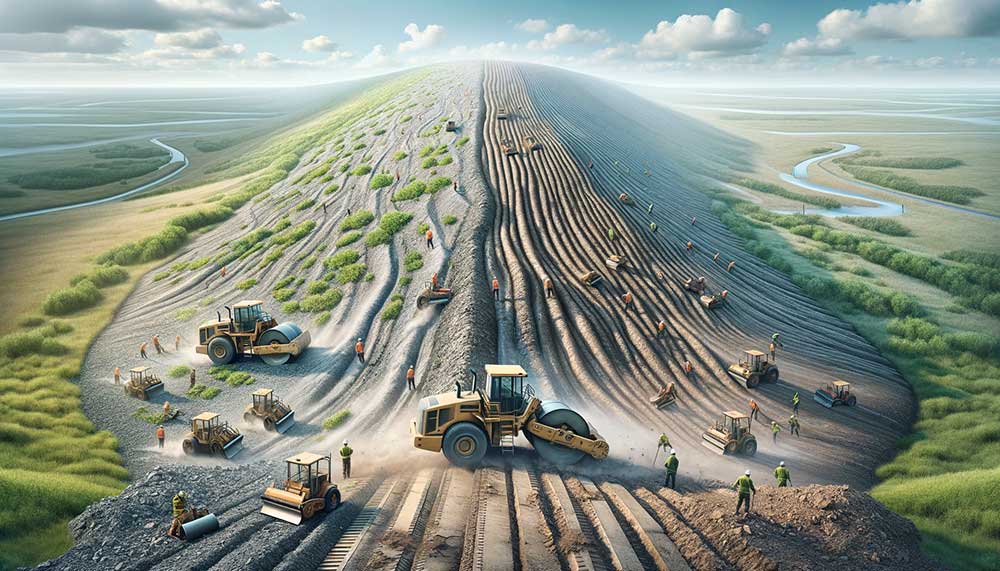
Erosion control is a critical aspect of environmental management, aiming to prevent soil loss, water pollution, and habitat destruction. Among the various techniques employed, slope compaction stands out as an effective measure for stabilizing soils on slopes and embankments. This article delves into the importance of slope compaction in erosion control, its mechanisms, benefits, and practical applications.
Understanding Slope Compaction
Slope compaction is the process of increasing the density of soil on slopes through mechanical means. This technique involves using heavy machinery, such as rollers, compactors, or vibratory plate compactors, to compress the soil. The primary goal is to reduce the soil’s pore space, making it less susceptible to erosion by water or wind.
The Role of Slope Compaction in Erosion Control
Slope compaction plays a pivotal role in erosion control by enhancing the physical properties of the soil. Compacted soil on slopes has a higher resistance to erosive forces due to its increased density and decreased permeability. This makes it more difficult for water to infiltrate and erode the soil. Furthermore, compacted soil promotes surface runoff, which can be directed away from vulnerable areas through proper drainage systems.
Benefits of Slope Compaction
- Increased Soil Stability: Compacted slopes exhibit enhanced stability, reducing the risk of landslides and soil slippage.
- Improved Water Management: By limiting water infiltration, slope compaction aids in effective water management, preventing saturation and subsequent soil erosion.
- Vegetation Support: Compacted soil provides a stable foundation for vegetation, which is crucial for long-term erosion control. Plant roots further bind the soil, enhancing its resistance to erosion.
- Cost-Effective: Compared to other erosion control measures, slope compaction is cost-effective, especially for large-scale projects. It requires fewer materials and can be completed relatively quickly.
Practical Applications
Slope compaction is widely used in various projects, including:
- Roadway embankments: To ensure the stability of roads and highways built on slopes.
- Construction sites: To prepare land for construction, reducing the risk of erosion during and after the project.
- Landfills: To compact the cover soil, preventing erosion and controlling leachate movement.
- Restoration projects: In areas affected by erosion, slope compaction is used to stabilize the soil before revegetation efforts.
Challenges and Considerations
While slope compaction is beneficial, it requires careful planning and execution. Over-compaction can lead to reduced soil aeration and drainage, negatively affecting plant growth. The choice of compaction equipment and the depth of compaction must be tailored to the specific soil type and project requirements. Environmental considerations, such as the potential impact on nearby water bodies and habitats, must also be taken into account.
Slope compaction is a vital technique in the arsenal of erosion control strategies. By enhancing soil stability and reducing erosion risk, it supports sustainable land management and environmental conservation. However, its successful implementation demands a thorough understanding of soil mechanics, careful planning, and adherence to environmental guidelines. As such, slope compaction exemplifies the balance between human needs and environmental stewardship, playing a crucial role in preserving our planet’s natural resources.
